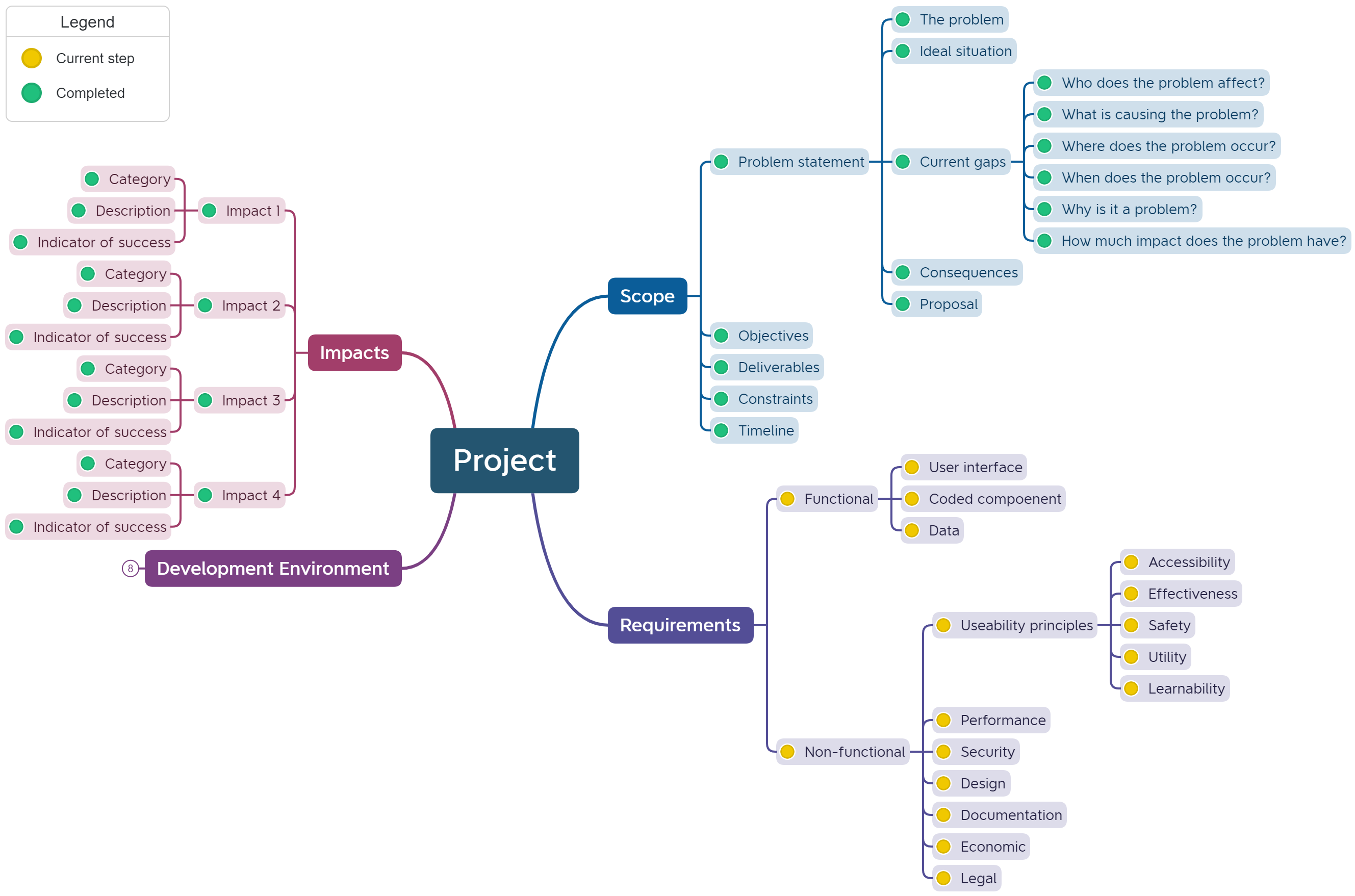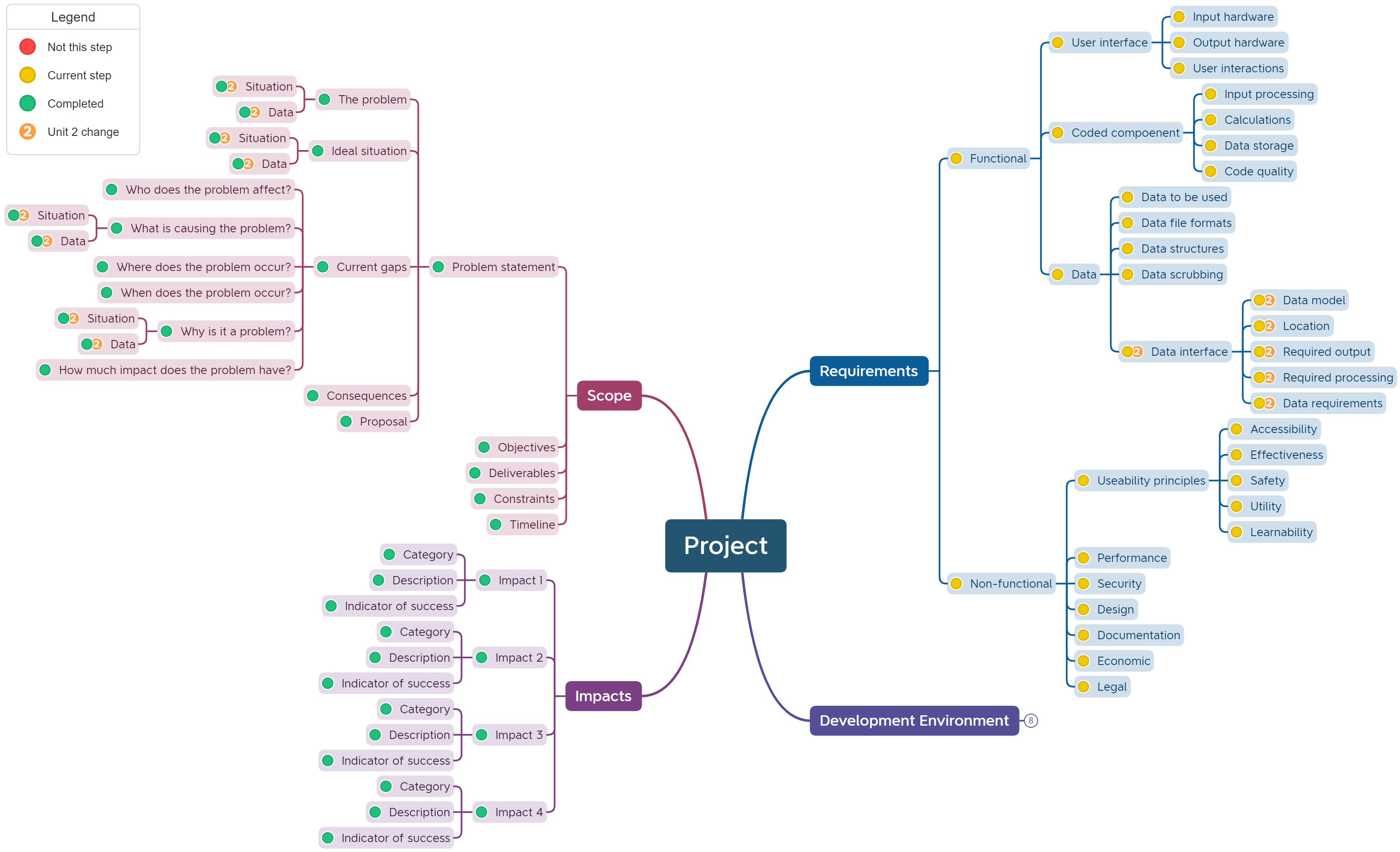Identify Requirements
Contents
Identify Requirements#
Tools used:
mind maps
requirments table
For Unit 1#
At this stage of the exploration you should have a clear idea of what the project demands of you.
Identify the function and non-functional requirements that the project is explicitly and implicitly asking for and add them to the mind map under requirements.

Now expand the requirements using the Requirements Table under the headings of must, should, could and won’t.

For Unit 2 to 4#
In addition to the Unit 1 requirements, you also need to consider both programming options and insertion problems and record the identified requirements in the mind map.

You will need to consider the following issues:
data models
storage
output requirements
data formats
validation rules
data requirements
Unit 1 subject matter covered:
analyse a given problem to identify the requirements of the solution
analyse a given problem to identify the user perspective and user-experience requirements
analyse a given problem to identify technical issues of the problem that influence the user-interface requirements [QCAA, 2017]
Unit 2 subject matter covered:
determine manageable aspects of a problem through decomposition, pattern recognition and analysis of programming options including data models, and storage and output requirements
analyse problems associated with data insertion, including variations in data formats, data structures, validation rules and data requirements
recognise the elements needed for a data-driven solution, including programming requirements, e.g. SQL and algorithms
recognise the elements needed for a data-driven solution, including system requirements, e.g. platforms, connections, hardware and data stores
recognise the elements needed for a data-driven solution, including the data that is required from real-world data sources, e.g. files, peripheral devices, online sources and users [QCAA, 2017]
Unit 4 subject matter covered:
determine manageable aspects of a problem through a decomposition and analysis of data storage and output requirements [QCAA, 2017]
